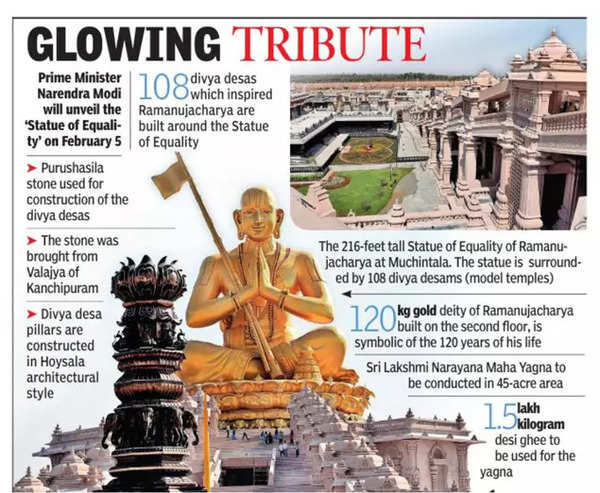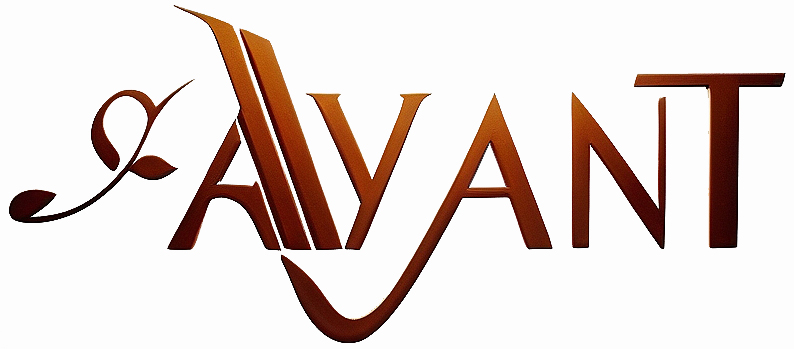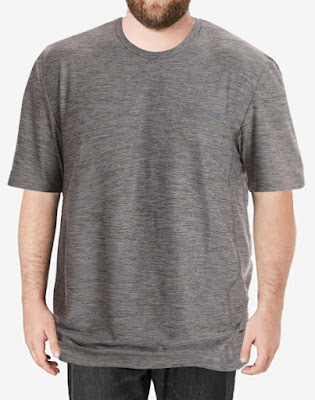Top Hats Unveiled: Symbolism, Style, And History
Top hats symbolize sophistication and power, with a rich history dating back to the 18th century. These iconic headpieces blend fashion with cultural significance.
Top hats, once a staple of formal wear, have transcended their original utility to become symbols of timeless style and social status. Originating in the 1700s, they quickly became associated with the elite, encapsulating the era's emphasis on height and stature in fashion.
They have persisted through the centuries, adapting to changing tastes while retaining their emblematic form. This headgear's historical journey reveals its evolution from a gentleman's accessory to a cultural icon, mirroring societal shifts and fashion trends. As readers embark on this exploration of top hats, they step into a narrative that intertwines sartorial elegance with the unfolding of history, understanding how this simple accessory has made a lasting impact on fashion and societal norms.
 |
| Credit: differenttouch.com |
The Rise Of The Top Hat
The top hat, a tall, unmistakable symbol of elegance and status, has a rich history. Let's dive into its origins and evolution.
Origins In 18th-century Europe
The top hat first appeared in the 1700s. It arose from the need for a new fashion statement amongst the gentry. As a stylish accessory, this flamboyant headwear quickly caught the public's eye. Crafted from felted beaver fur, it was both functional and fashionable.
- Notable year: 1797
- Creator: Haberdasher John Hetherington
- Initial reaction: Caused a sensation on London streets
Evolution Into A Status Symbol
Soon, the top hat became much more than just headwear. It was a sign of affluence and respectability. Society's elite wore it to show off their social rank.
| Century | Social Class Embracing the Top Hat |
|---|---|
| 19th | Aristocrats and bourgeois |
| Early 20th | Businessmen and politicians |
| Mid-20th | Entertainers and performers |
This headgear's prestige was not limited to Europe. Across the Atlantic, American presidents and tycoons also donned the top hat.
Credit: www.agnoulitahats.com
Iconic Moments In Top Hat History
The top hat has seen a thrilling journey through the annals of fashion and politics. It's an item that not only shaded eyes from the sun but also became a symbol of status, style, and societal change. This luxurious headwear has graced the heads of many influential figures and has starred in pivotal moments that have left an indelible mark on history.
Famous Top Hat Wearers
Throughout the centuries, top hats have perched on the heads of many remarkable individuals. These iconic wearers turned the top hat into a timeless fashion statement.
- Abraham Lincoln: Recognized for his distinct stovepipe top hat that he wore during his presidency.
- Winston Churchill: Often pictured with a top hat, symbolizing his steely resolve and leadership during wartime.
- Fred Astaire: The silver screen's dancing legend frequently donned top hats in his performances, exuding elegance and sophistication.
- Queen Elizabeth II: As a figure of dignity and tradition, she has been seen wearing a top hat at various equestrian events.
Impactful Events Featuring The Headwear
The top hat has witnessed and participated in events that shaped the course of history.
| Year | Event |
|---|---|
| 1797 | Introduction of the top hat by haberdasher John Hetherington. |
| 1849 | Abraham Lincoln's inauguration, remembered for his iconic top hat. |
| 1953 | Queen Elizabeth II's coronation, with peers wearing traditional top hats. |
| 1961 | John F. Kennedy's inauguration, noted as the last where a top hat was worn by a U.S. President. |
Symbolic Significance
The suit and top hat combo is iconic. Yet few understand the depth of meaning behind the tall, stiff top hat. This headpiece carries a wealth of symbolism, rooted deep in history.
Social Hierarchy And Class
The top hat's rise to prominence during the 18th and 19th centuries was no fluke. It became a clear indicator of social status. The higher and sleeker the hat, the louder the statement of wealth and power.
- Ordinary citizens rarely sported top hats.
- Upper-class gentlemen showcased their stature with this headwear.
- Black silk top hats were reserved for the highest rungs of society.
White tie events still uphold this tradition, where the top hat signifies the pinnacle of formal attire.
Top Hats In Literature And Film
In books and movies, the top hat often reveals much about a character.
| Character | Significance |
|---|---|
| Scrooge from A Christmas Carol | Shows wealth and miserliness. |
| Willy Wonka | Represents whimsicality and uniqueness. |
| The Mad Hatter from Alice in Wonderland | Embodies eccentricity and non-conformity. |
Hollywood often depicts villains or aristocrats with top hats, pushing the symbol toward the edge of cultural consciousness.
Design And Construction
Exploring the Design and Construction of top hats opens a door to a fascinating world of fashion history. These iconic high-crowned, flat-brimmed hats have captivated the imaginations of people worldwide. Let's dive into the materials and craftsmanship that have underpinned their enduring appeal and examine how they've evolved over time.
Materials And Craftsmanship
Top hats owe their structure and durability to the quality of materials and the skill of hat makers. Originally, beaver fur felt was the hallmark of luxury. By steaming and molding the material, artisans created a smooth, water-resistant finish. Silk plush eventually replaced beaver felt as a more accessible, yet still elegant, option for those seeking the top hat's sophistication.
- Beaver fur felt: luxury and durability
- Moleskin: smooth texture
- Silk plush: sheen and accessibility
- Leather: used for lining and sweatbands
Craftsmen employed a variety of tools such as conformateurs, brim shapers, and ironing stations to ensure a perfect fit and impeccable appearance. Stiffening agents like shellac gave the hats their firm shape, while intricate linings and trimmings added comfort and style.
Variations And Styles Through The Ages
The top hat has seen many changes as fashions evolved. The Regency era favored a taller crown, while the Victorian period saw the introduction of the shorter 'stovepipe' style. Each era left its mark on the design, influencing everything from crown height to brim width.
| Period | Style Features |
|---|---|
| 18th Century | Bell-crowned, taller designs |
| 19th Century | Stovepipe, rounded 'topper' |
| Early 20th Century | Streamlined, lower crowns |
| Modern day | Diverse, from classic to whimsical |
Designs often signaled the wearer's wealth and status, with elaborate trimmings like ribbons, bands, and bows. In contrast, simpler styles suited everyday wear or specific professions. Whether for the opera or the office, there was a top hat for every occasion.
Cultural Resurgence And Modern Use
As fashion cycles spin, the top hat finds its place again in modern times. This iconic headwear, once a staple of sophistication, re-emerges, blending traditional allure with contemporary style. The top hat, a symbol of bygone eras, now captures the imagination of new generations. Its utility transcends mere head covering, becoming a statement piece in the landscape of fashion and culture.
Top Hats In High Fashion
High fashion runways now showcase top hats as bold adornments. Designers breathe new life into this classic silhouette:
- Material innovation: velvet, leather, even transparent plastics
- Embroidery intwined: sequins, feathers, and beadwork
- Color bursts: from timeless black to electric hues
Top hats pair with cutting-edge suits and dresses, proving old-world charm can meet modern design.
The Accessory In Contemporary Culture
The top hat now appears across various modern settings:
| Event Type | Top Hat Role |
|---|---|
| Weddings | Groom's classical headpiece |
| Themed Parties | Costume essential |
| Music Festivals | Boho-chic accessory |
Even in film and television, characters don top hats to evoke a sense of heritage or to create a stylistic signature. From street style icons to performers, the top hat symbolizes distinctiveness and self-expression in today's world. This hat is not just about fashion; it's a statement of creativity and individualism.

Credit: timesofindia.indiatimes.com
Etiquette And Proper Wear
Diving into the polished world of top hats, etiquette plays a pivotal role. Understanding Etiquette and Proper Wear is essential. It's not just about looking sharp but also about respecting tradition and culture. Let's unveil the rules and modern twists of top hat etiquette.
Traditional Rules Of Top Hat Etiquette
Dating back to the 18th century, top hat etiquette was a sign of one's status and decorum. Let's explore the staple rules:
- Formal Events: Reserved for the most formal occasions such as weddings and state ceremonies.
- Mourning Wear: Specific styles, like the black silk variety, signified a gentleman in mourning.
- Day and Evening Wear: Time of day dictated color; grey for daytime, black for evening.
- Public Places: Gentlemen would remove their hats indoors or while conversing with a lady.
Modern Interpretations And Usage
Presently, top hats blend traditional foundations with contemporary flair:
| Occasion | Top Hat Style | Etiquette Note |
|---|---|---|
| Weddings | Classic Black or Grey | Worn with a formal morning suit |
| Races (e.g., Royal Ascot) | Varied Colors | Adheres to the event's dress code |
| Modern Parties | Creative Designs | More relaxed rules; often for fashion |
Though the rules have relaxed, some traditions persist. Men may still tip or doff their hats as a gesture of respect. In a nod to the past, modern wearers choose authenticity and personal style to express themselves through this iconic headwear.
Preservation And Collection
The allure of top hats extends beyond their sophisticated appearance; they are treasures of a bygone era. Collectors and fashion historians emphasize the importance of preserving antique top hats. This section will delve into the intricacies of maintaining these vintage pieces and explore the vibrant community of top hat collectors and enthusiasts.
Maintaining Antique Top Hats
Antique top hats demand special care to maintain their condition and value. Proper storage is crucial. Use a hat box that is dry and cool to prevent damage. Avoid prolonged exposure to direct sunlight, as it can fade the color and weaken the material. Regular dusting with a soft brush keeps the surface clean without harming the fabric. For stains, seek a professional who specializes in vintage fabric care. For long-term preservation, consider using acid-free tissue to support the hat's shape.
The World Of Collectors And Enthusiasts
The community of top hat collectors and enthusiasts is a vibrant one, filled with individuals passionate about their preservation. Members often share tips, display their collections, and exchange historical insights. Here’s a quick snapshot:
- Forums and Online Groups: Digital platforms offer spaces to discuss and trade top hats.
- Events and Auctions: Collector gatherings and auctions are hotspots for acquiring rare pieces.
- Museums and Exhibitions: Exhibitions showcase top hats, offering public education and enjoyment.
- Private Collectors: Some individuals hold impressive personal collections that they curate over many years.
Collectors also emphasize authenticity. Certificates of authenticity or provenance can significantly enhance a top hat's value. Overall, these community efforts play a pivotal role in the conservation of top hat heritage. Antique top hats not only represent a slice of fashion history but also a testament to timeless elegance treasured by collectors worldwide.
The Future Of The Top Hat
As fashion evolves, the top hat, a symbol of sophistication and style, stands at the cusp of revival and transformation. With its riveting history and iconic symbolism, the top hat holds promises of innovation and a new era of eco-conscious elegance. We're not just tipping our hats to tradition but modernizing a timeless trend.
Innovations and the Sustainable ShiftInnovations And The Sustainable Shift
Fresh designs emerge, transforming the classic top hat into a statement of innovation. New materials take center stage, introducing lighter, more durable forms that maintain the luxurious feel. The sustainable shift in fashion drives the reimagining of this accessory with recycled fabrics and ethical sourcing practices.
The Top Hat's Role in Future Fashion TrendsThe Top Hat's Role In Future Fashion Trends
Defying expectations, the top hat blends with contemporary styles, influencing high-fashion runways and streetwear alike. It emerges as a versatile accessory, synonymous with boldness and creativity. Future fashion trends will embrace the top hat as an expression of individuality, mirroring society's ever-changing tastes and values.

Credit: www.theguardian.com
Frequently Asked Questions On Top Hats Unveiled: Symbolism, Style, And History
What Did Top Hats Symbolize?
Top hats traditionally symbolized wealth, sophistication, and high social status during the 19th and early 20th centuries.
What Is The Historical Significance Of Hats?
Hats have held various roles throughout history, from indicating social status and profession to offering protection and becoming fashion statements. They reflect cultural significance and have been integral to ceremonial and military uniforms.
What Does A Top Hat Stand For?
A top hat symbolizes traditional formal wear, often associated with sophistication and historical fashion of the upper class.
When Did The Top Hat Go Out Of Style?
The top hat began declining in popularity during the early 20th century, becoming rare by the 1950s.
Conclusion
Top hats, a beacon of elegance, have journeyed through history with grace. They embody culture, fashion, and societal shifts. Their storied past enriches our understanding of style's evolution. As we embrace modern trends, let's keep celebrating these icons of sartorial splendor and their timeless allure.
Remember, a top hat is more than an accessory; it's a historical statement.





No comments